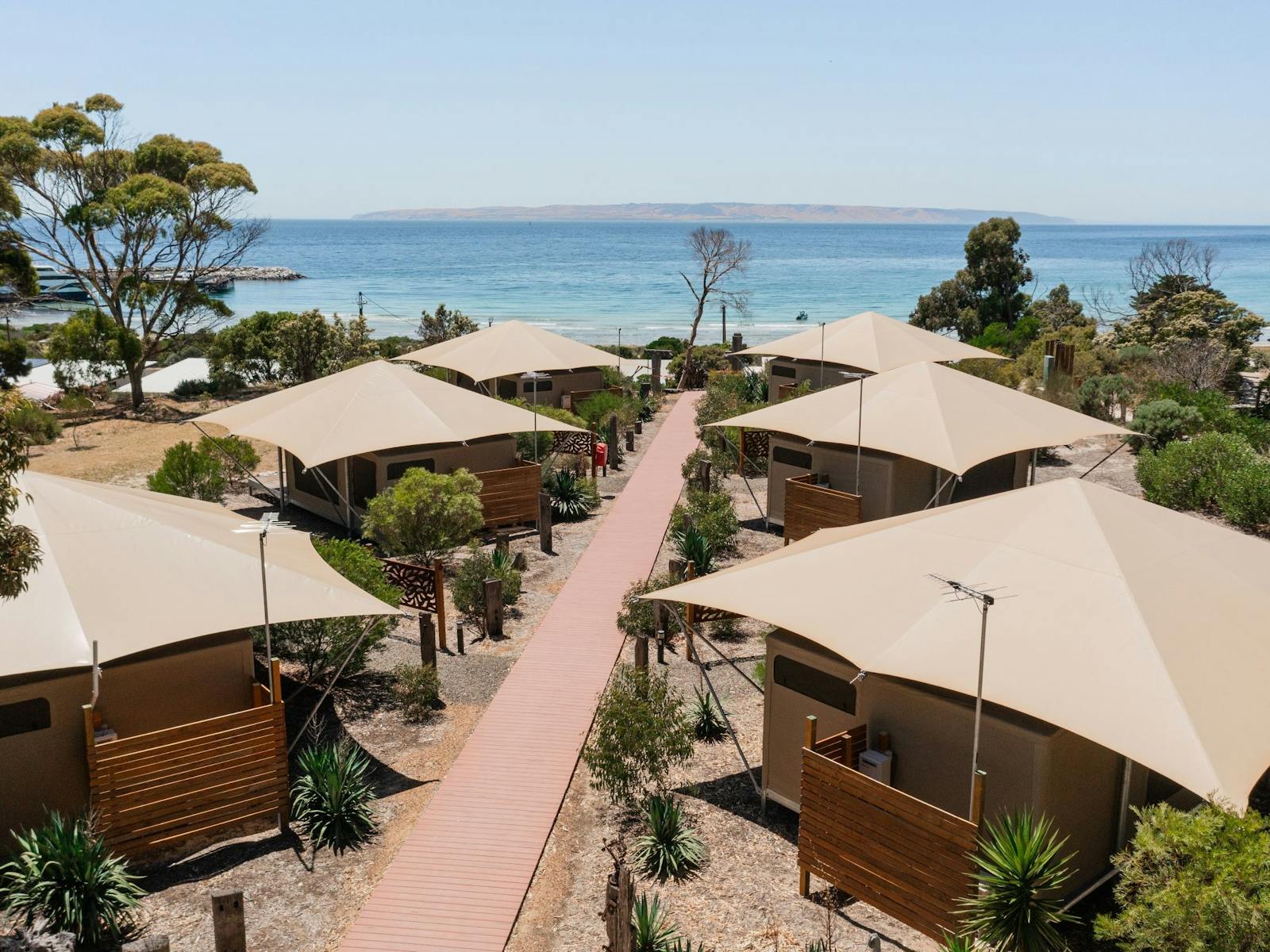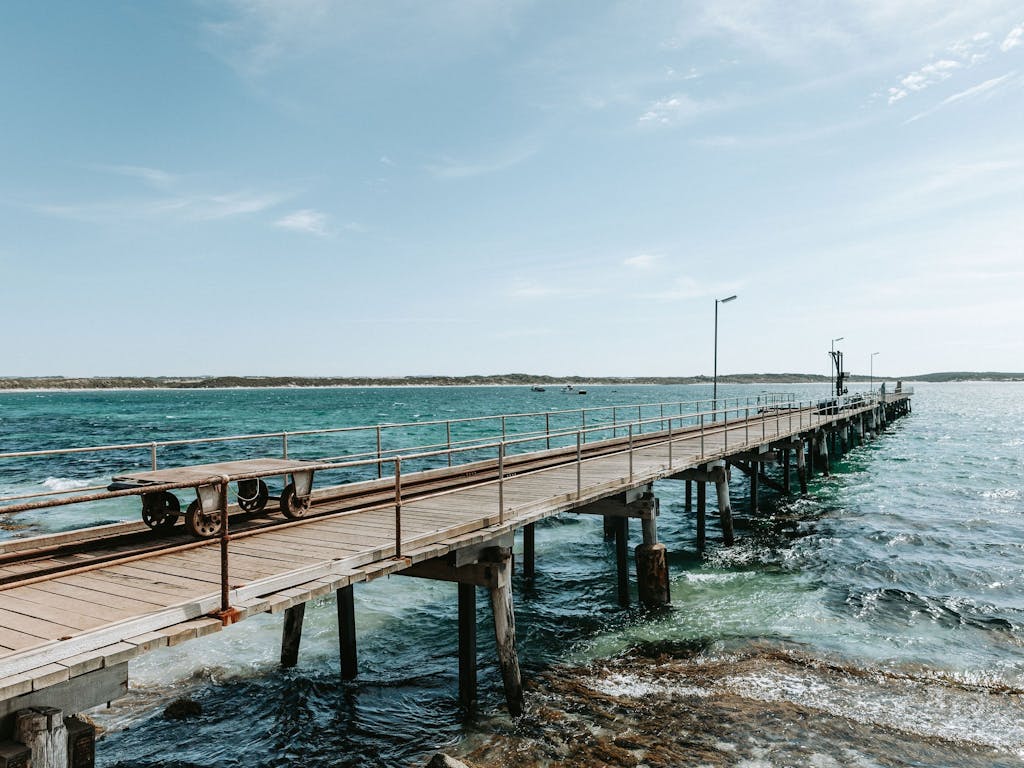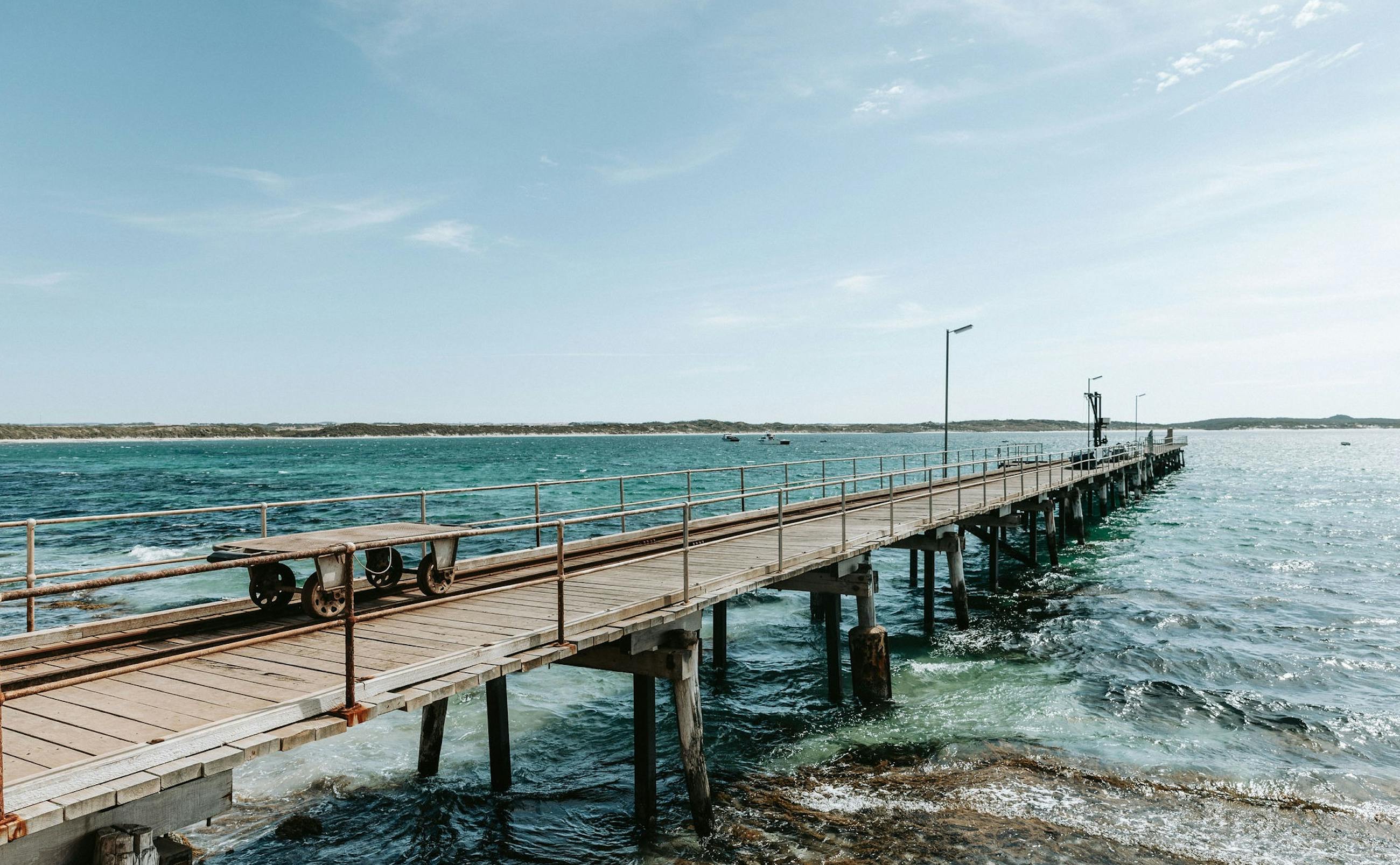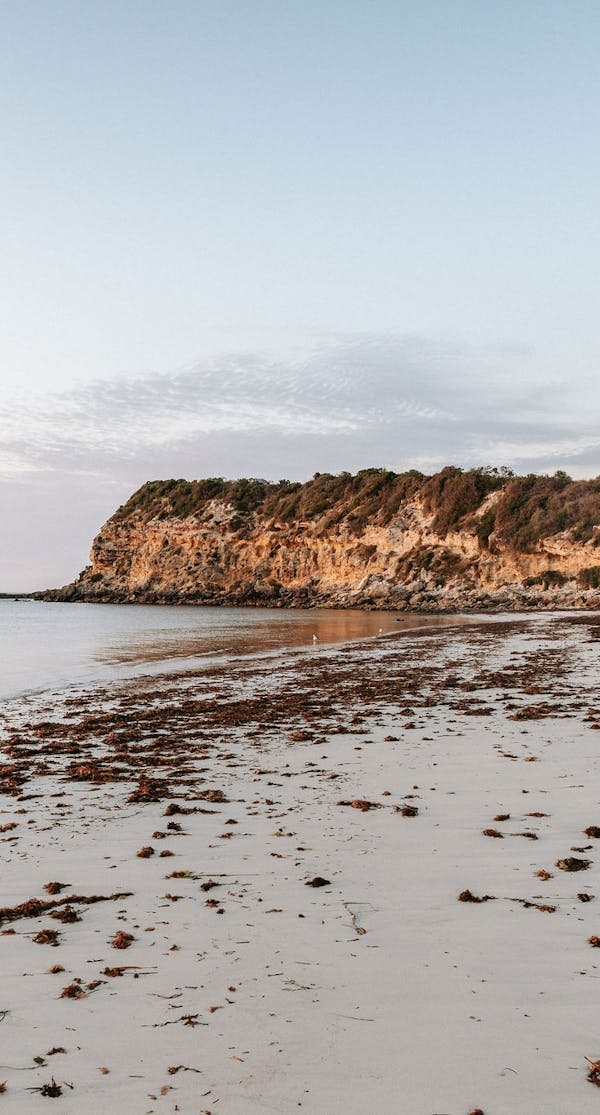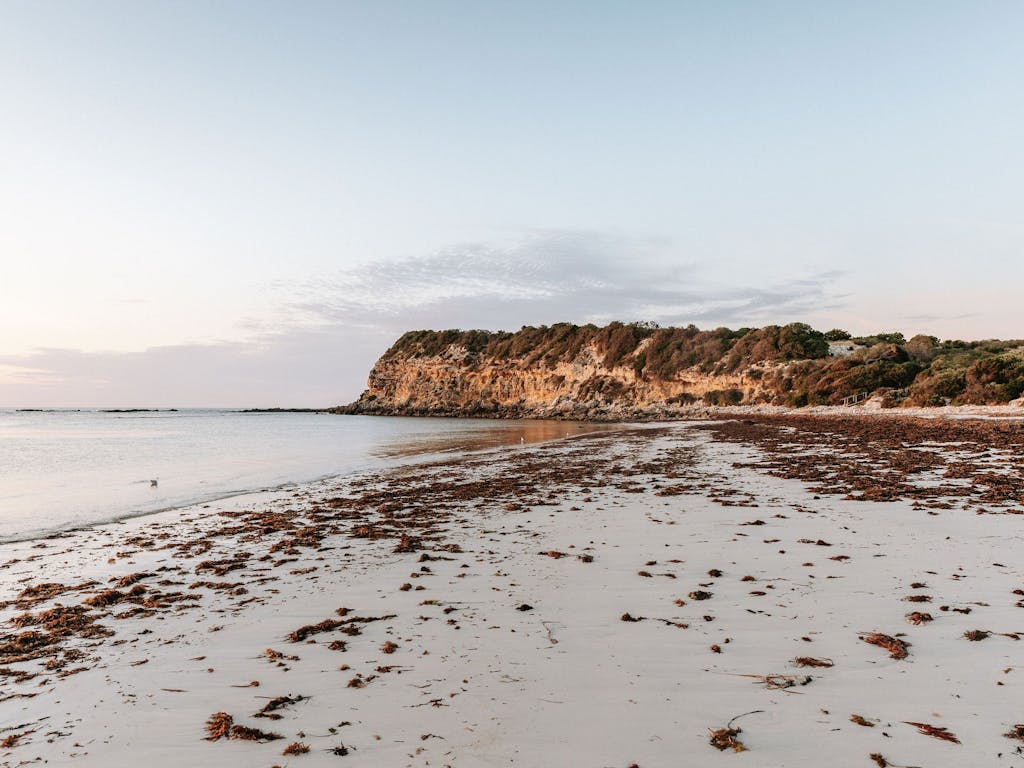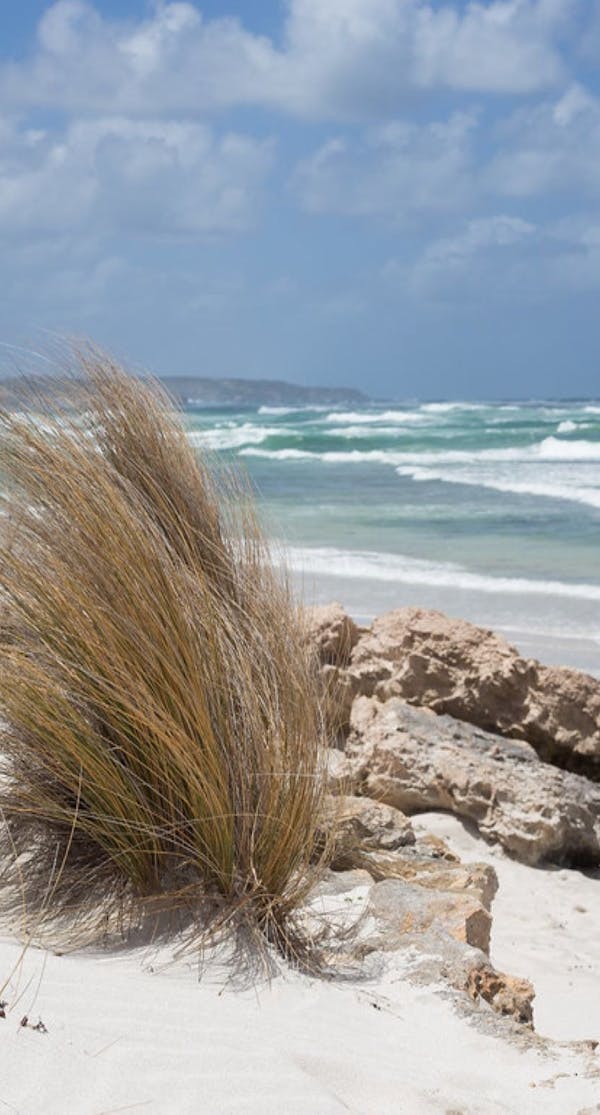See the Sights on the Kangaroo Island South Coast
Head south to explore Kangaroo Island’s natural adventure playground
The Kangaroo Island south coast is all about natural attractions and activities. Follow the sealed South Coast Road and discover what makes it special.
South Coast Beaches and Rivers
The beaches are spectacular, with white sand, massive coastal dunes and turquoise water. Once voted best in Australia, Vivonne Bay’s beach is great for picnics, beachcombing, fishing and surfing—catch some big waves when the swell rolls in on the main beach.
A great spot for families with young children, the Harriet River’s calm waters near Vivonne Bay offer plenty of space to swim and kayak.
The D'Estrees Bay beaches also offer spectacular Kangaroo Island South Coast scenery and are good for surfing and fishing.
South Coast Wildlife
Seal Bay Conservation Park is one of the few places in the world where Australian sea-lions can be observed up close. An 800-metre-long boardwalk zig-zags down between the dunes where sea lions frolic in the surf a short distance away.
Take a kayak out onto the Harriet River near Vivonne Bay and look out for koalas and echidnas in the bushland.
Murray Lagoon, a wetland habitat in the Cape Gantheaume Conservation Park and adjacent to Seal Bay, is known for its abundant birdlife, a great spot for twitchers.
Hiking and Adventure
Formed over thousands of years and now covering two square kilometres of land, the towering dune system known as ‘Little Sahara’ is Kangaroo Island's adventure playground.
The southern section of D'Estrees Bay is also part of the Cape Gantheaume Conservation Park, with numerous walking trails leading into the wilderness. Take the D'Estrees Bay Self-guided Drive which begins at the second boat ramp to discover a greater understanding of the natural and cultural history of this place. D'Estrees Bay also happens to be one of Kangaroo Island's most favourite locations for surfers.
Discover the South Coast
-
Play video: Little Sahara

Little Sahara
-
Play video: Busy Bees

Busy Bees
-
Play video: The Seal Whisperer

The Seal Whisperer
Island Stays
-
Ecopia Retreat - Luxury Eco Villas
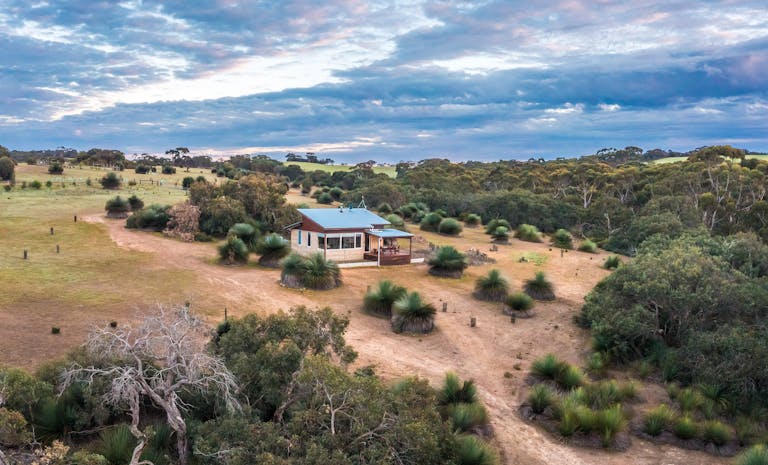
-
South Coast
Bed and Breakfast, Holiday Houses, Retreat and LodgesTwo architecturally designed, secluded and luxurious Eco Villas. In the heart of a 150-acre registered wildlife sanctuary. A… -
-
Ecopia Retreat - The Residence
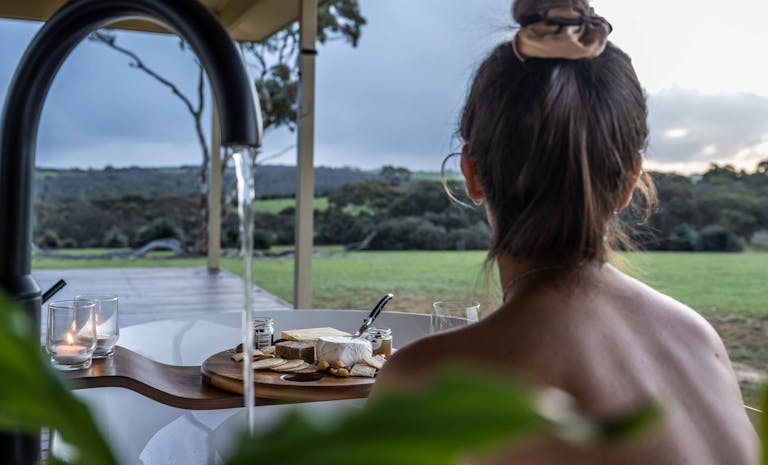
-
South Coast
Bed and Breakfast, Holiday Houses, Retreat and LodgesA luxury 3-bedroom retreat in the middle of a registered wildlife sanctuary full of native animals and birds! The perfect… -
-
Ecopia Retreat - The Rise
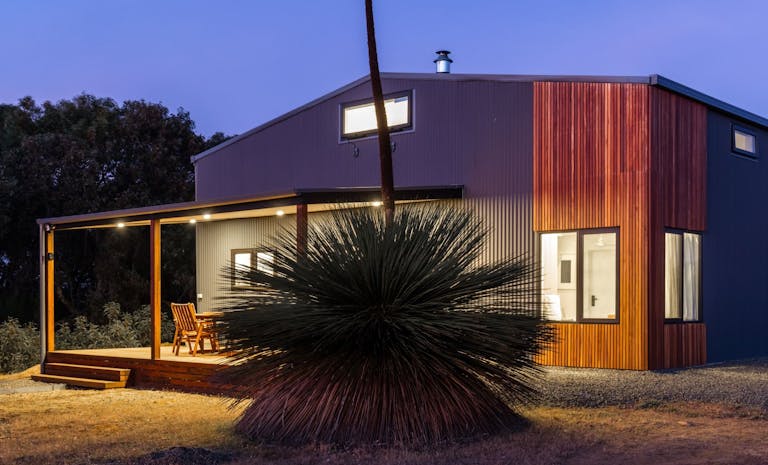
-
South Coast
Holiday Houses, Retreat and LodgesA loft-style 2-bedroom luxury retreat nestled in nature, in a private wildlife sanctuary! A true nature immersion for couples,… -
-
Cape Gantheaume Conservation Park and Wilderness Protection Area Campgrounds

-
South Coast
Caravan, Camping and Holiday ParksLocated in Cape Gantheaume Conservation Park, there are 5 campsites spread across four separate campgrounds. -
-
Eleanor Downs Farm Stay - Soldier Settler

-
South Coast
Farmstays, Holiday HousesSoldier Settler is a beloved original soldier settler farmhouse with 360 views over the farm paddocks. Completely private and… -
-
Eleanor Downs Farm Stay - Wittows Creek

-
South Coast
Farmstays, Holiday HousesWittows Creek is a large modest farmhouse situated next to Wittows Creek, perfect for families to share or for a large group of… -
-
Koopalanda Dreaming
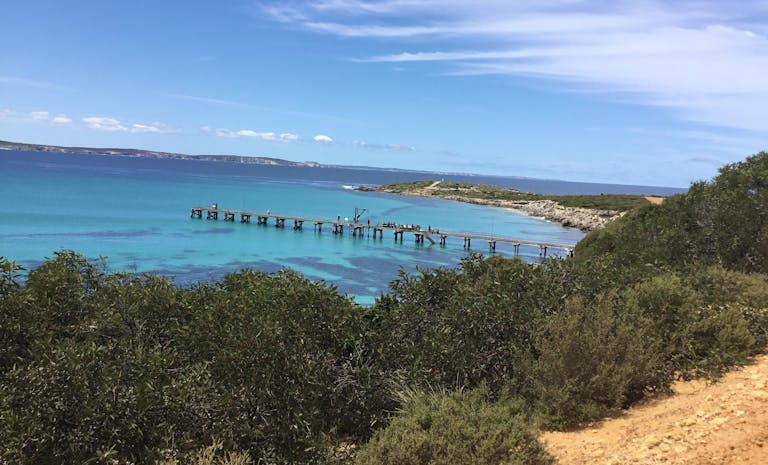
-
South Coast
Holiday HousesKoopalanda Dreaming has panoramic views of Vivonne Bay and coast. Located close to the jetty, beach and golf course. -
-
Rivarnia Cottage Kangaroo Island

-
South Coast
Cottages, Retreat and LodgesLuxury and comfort in a wonderful, natural setting. Ideally located in the centre of Kangaroo Island, offering easy access to… -
-
The Workman's Cottage - Stranraer Kangaroo Island
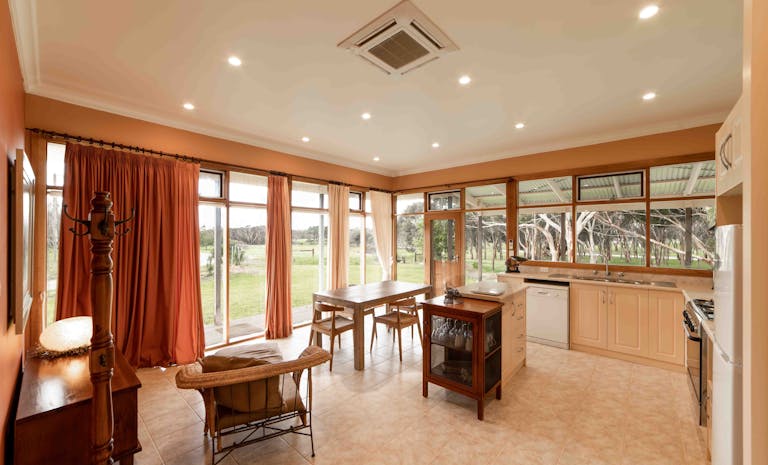
-
South Coast
Cottages, Holiday Houses, Retreat and LodgesExperience the unique charm and tranquillity of The Workman’s Cottage, located on a third-generation sheep farming property in… -
-
Wattle Grove Cottage - Stranraer Kangaroo Island

-
South Coast
Cottages, Farmstays, Holiday HousesDiscover the charm and tranquility of Wattle Grove Cottage, nestled on a historic farming property in the heart of rural… -
-
Wild Retreat Kangaroo Island
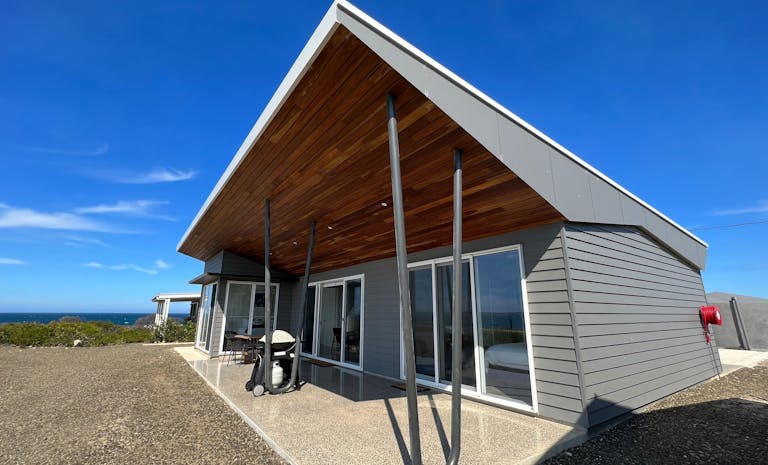
-
South Coast
Retreat and LodgesWild is a luxury self-contained retreat located on the Southern Ocean side of Kangaroo Island. -
-
Vivonne Bay Camp Ground
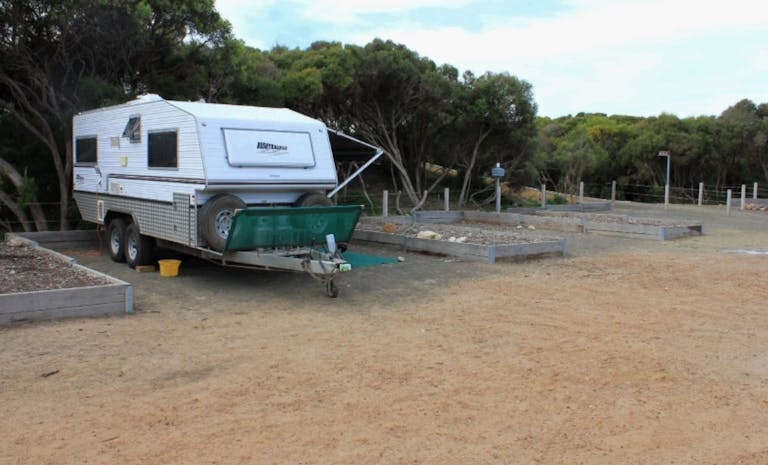
-
South Coast
Caravan, Camping and Holiday ParksThe camp ground is located walking distance from the long curved sandy beach of Vivonne Bay which was rated as the Best Beach… -
-

Emu Ridge Experiences on Kangaroo Island
Find out more about Emu Ridge Experiences on Kangaroo Island-
South Coast
-
-

-

-
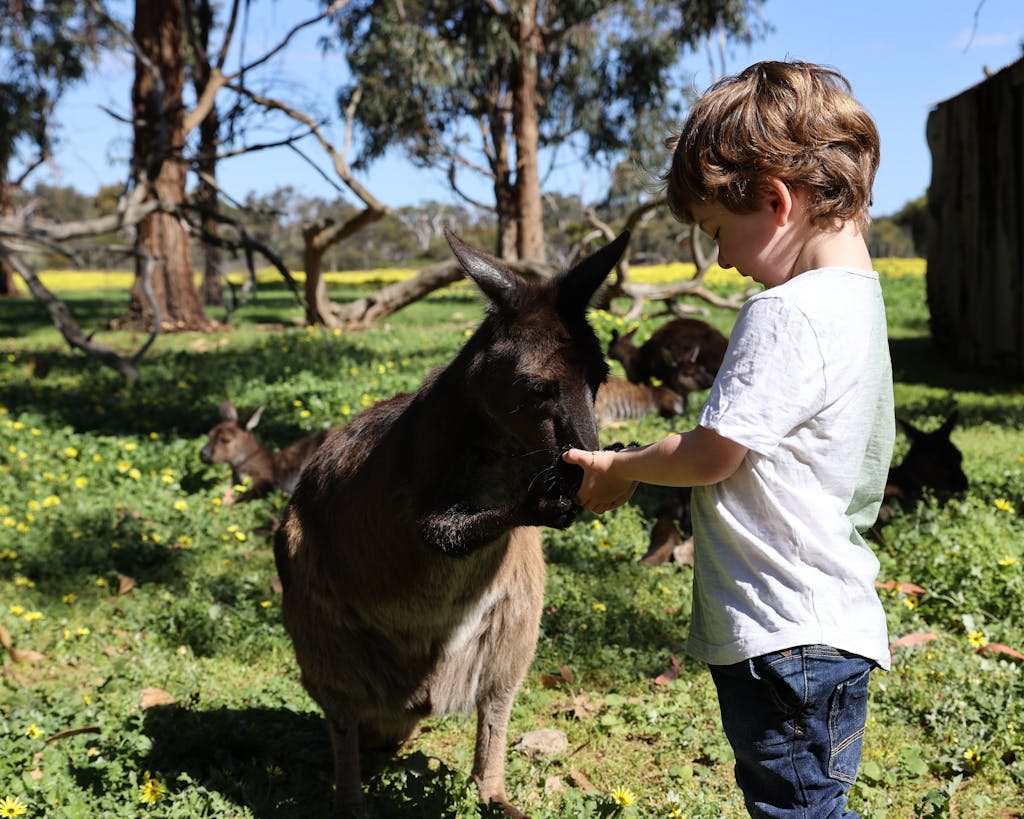
-

Kangaroo Island Bush Getaway Adventures
Find out more about Kangaroo Island Bush Getaway Adventures-
West End
-
-

-

-

-

Get all of your frequently asked questions answered
If you are planning your visit to Kangaroo Island, then here are our essential guides and maps to help your itinerary
How to get to Kangaroo Island and how to get around the Island, essential information for you to know.
Learn about our Islands history and heritage, keeping the Island special and our iconic wildlife
Learn when to visit Kangaroo Island for abundant wildlife, wildflowers, fantastic local produce and seafood and the best natural attractions each season
-
Emu Ridge Eucalyptus Oil Distillery on Kangaroo Island
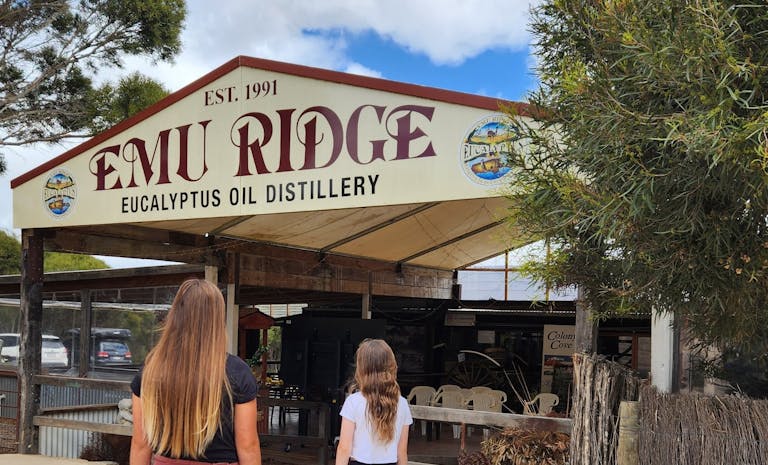
-
South Coast
Agri, Mining and IndustryA unique Aussie attraction & retail craft gallery that includes tours of the eucalyptus distillery, local produce & art, Café &… -
-
Clifford's Honey Farm

-
South Coast
Agri, Mining and IndustryGo to Cliffords Honey Farm on Kangaroo Island for a new tasting experience. -
-
Emu Ridge Café | Emu Ridge Eucalyptus Oil Distillery Kangaroo Island
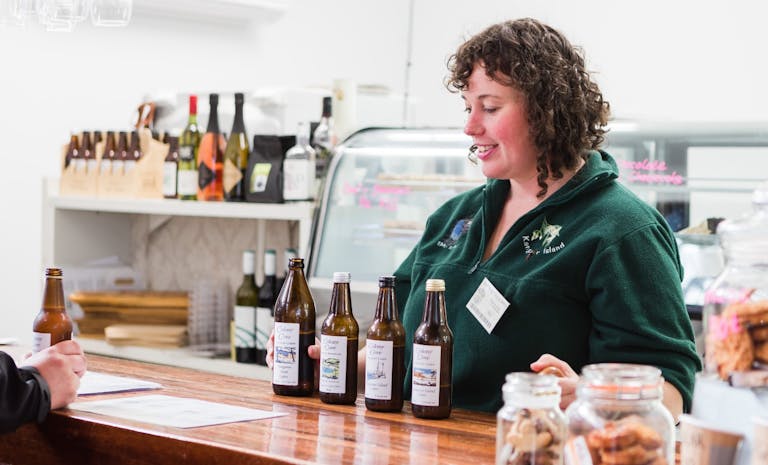
-
South Coast
Restaurant and Cafe, ProduceNestled in the bush, Emu Ridge Cafe & Cellar Door is a great spot for a quiet breakfast or a great lunch. -
-
Vivonne Bay General Store and Bottle Shop
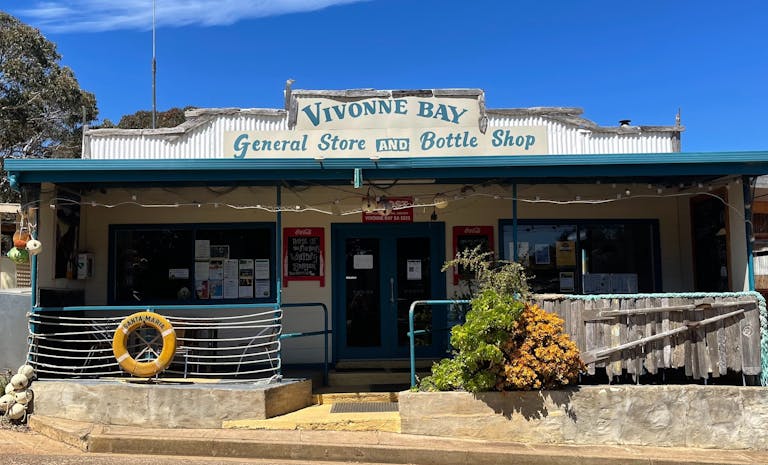
-
South Coast
Restaurant and CafeThe Vivonne Bay General Store is home of the famous KI whiting burger. It offers a great simple menu and a friendly… -
-

Iconic Wildlife
As one of the world’s best nature-based destinations, learn about and get up close to the iconic Kangaroo Island Wildlife, including the Kangaroo Island Kangaroos. -

Things to do on Kangaroo Island with kids | Our Top Five
Check out our top five Kangaroo Island kids activities to do, see, taste and experience on your next KI family holiday, and see how many you can fit in! -

Essential Kangaroo Island Camping and Caravan Tips
Camping on Kangaroo Island offers visitors a diverse range of caravanning & camping options from caravan parks to campgrounds or bush campsites. Read more
-

-

Bald Hill Walk - Cape Gantheaume Conservation Park
Find out more about Bald Hill Walk - Cape Gantheaume Conservation Park-
South Coast
-
-
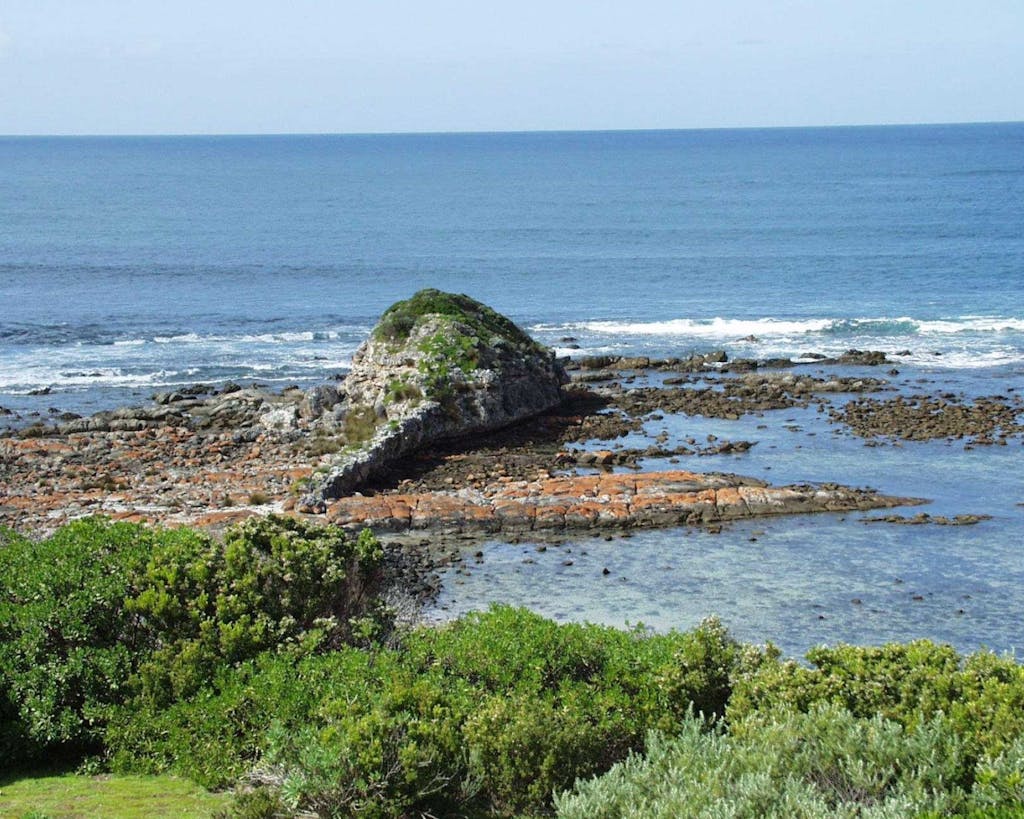
Tadpole Cove Walk - Cape Gantheaume Conservation Park
Find out more about Tadpole Cove Walk - Cape Gantheaume Conservation Park-
South Coast
-
-

Timber Creek Walk - Cape Gantheaume Conservation Park
Find out more about Timber Creek Walk - Cape Gantheaume Conservation Park-
South Coast
-
-

Curley Creek Hike - Cape Gantheaume Conservation Park
Find out more about Curley Creek Hike - Cape Gantheaume Conservation Park-
South Coast
-
-
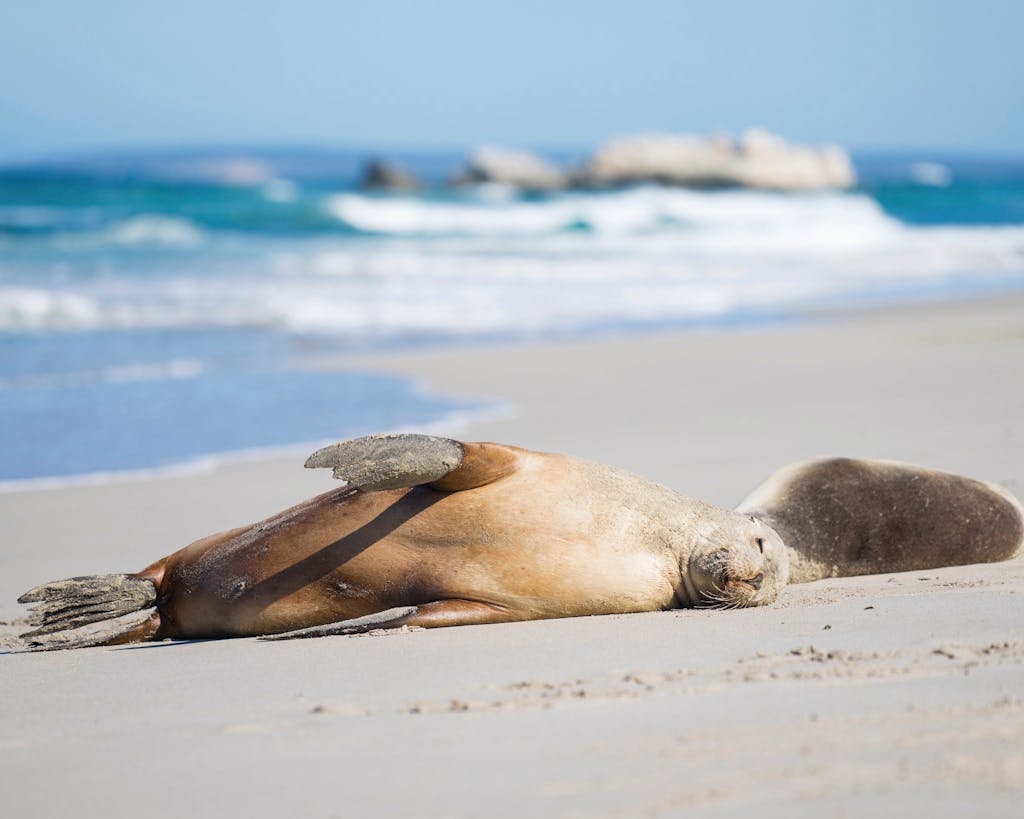
Cape Gantheaume Conservation Park and Wilderness Protection Area
Find out more about Cape Gantheaume Conservation Park and Wilderness Protection Area-
South Coast
-
- Vivonne Bay
- D'Estrees Bay
- Bales Beach
LOCAL SECRETS
Eucalyptus Oil
Eucalyptus Oil distilling was once one of Kangaroo Island's major industries. Distilled from the leaf of the indigenous Kangaroo Island Narrow-leaf Mallee, Eucalyptus cneorifolia. It began in the 1880's, and was a supplementary income for the farmers clearing their land for sheep farming. In the 1930's it reached its peak with 48 stills employing over 600 people. Over the eucalyptus distilling era there were around 100 stills on the island. In 1938 two plantations were established at Emu Ridge for the purpose of systematically harvesting on a rotational basis. The narrow-leaf mallee responds well to pruning.
Ligurian Bees
Kangaroo Island is the world's oldest bee sanctuary and is home to the purest strain of Ligurian Bee in the world. A pure strain of any species is rare these days, especially in the bee world in which continental population shifts have meant the crossing of species for centuries. The Italian honeybee is thought to originate from the continental part of Italy, south of the Alps, and north of Sicily. The subspecies may have survived the last Ice Age in Italy. Kangaroo Island bee colonies have never been exposed to other common diseases and bacteria that attack hies, as it is too far for bees to fly from the mainland.
Australian Sea Lions
Australian Sea Lions (Neophoca cinerea) are part of a group known as 'eared' seals. They use their front flippers to prop themselves up and their back flippers to help them to 'walk' on land. In the water their back flippers act as a rudder. These seals are one of the rarest species in the world and their entire population is estimated to be less than 12,000. They spend up to 3 days in the water fishing and 3 days back on the shore to rest and feed their pups.
Useful links
Nature and Wildlife, Food and Wine, Adventure, or Relaxation. Kangaroo Island has it all, and more.
-
-
Island Stays
From seaside holidays to premium luxury Kangaroo Island accommodation. Whether you're in… -
What to do
Come and experience our Island Life. Discover our spectacular nature and wildlife, our stunning… -
Stories
Unearth the Stories of Kangaroo Island, connect to the people and discover Island Time, revel…








